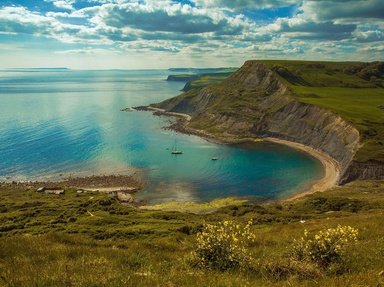Quiz Answer Key and Fun Facts
1. From the top of the Spinnaker Tower, which opened in 2005, it is possible to get a panoramic view across about 23 miles of southern Hampshire and neighbouring West Sussex. In which city is this modern landmark located?
2. Hampshire has some stunning countryside including sections of two separate National Parks. One is the New Forest but what is the name of the other?
3. Hampshire is home to many quintessentially English country villages characterised by thatched cottages, village greens and cosy country pubs. The village of Chawton has all of these features, but is probably best known for its museum dedicated to which 19th century English author?
4. Winchester Cathedral dates back over 900 years and is home to a wide range of historic treasures from 12th century wall paintings and illuminated manuscripts to pre-Raphaelite stained glass windows. However, it also has some modern additions including 'Sound II', a 20th century sculpture by which British artist who later created the 'Angel of the North'?
5. Fans of the television programme 'Downton Abbey' should head to a Hampshire country house if they want to visit the iconic building that 'plays' the eponymous home of the fictional Crawley family. In real life it was the home of the fifth Earl of Carnarvon who funded the archaeological excavation that resulted in the discovery of the tomb of the Egyptian pharaoh Tutankhamen. What is the name of this grand building?
6. Danebury Ring in northern Hampshire is a good example of how prehistoric human occupation changed the landscape of the county. What type of feature is it?
7. Alum Bay, notable for its colourful sandy cliffs; Carisbrooke Castle, where King Charles I was imprisoned prior to his trial and execution; and the town of Cowes, known for its annual sailing regatta are all located on an island off the south coast of Hampshire. Can you name the island?
8. In 1991 a canal running through Hampshire and the neighbouring county of Surrey was restored and re-opened to navigation for the first time since it became derelict in the 1960s. However, its industrial past has not been resurrected and it is now primarily used for leisure activities. Can you identify it from the options below?
9. Views of Hampshire's south coast around the naval city of Portsmouth are heavily influenced by a large number of defensive forts. What is unusual about the forts named Spitbank, Horse Sand and No Man's Land?
10. The city of Southampton has a strong maritime heritage having been one of England's key ports since the 13th century. It is situated on Southampton Water, a tidal estuary formed by which three rivers?
Source: Author
Fifiona81
This quiz was reviewed by FunTrivia editor
spanishliz before going online.
Any errors found in FunTrivia content are routinely corrected through our feedback system.

